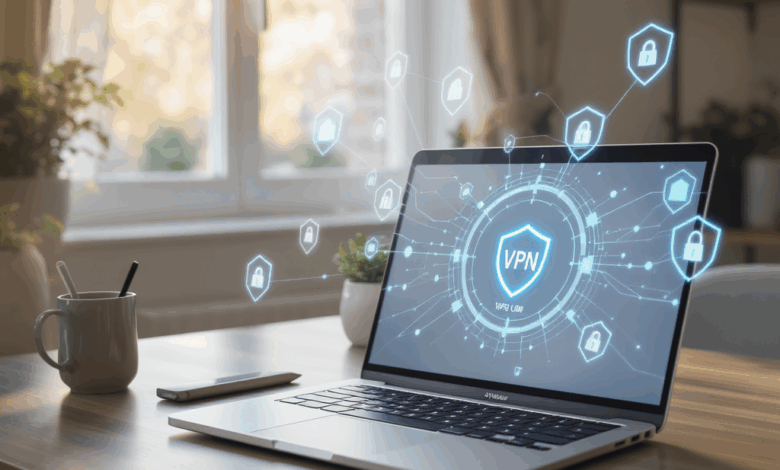Secure Your Remote Work – Master VPN Setup in 3 Simple Steps

Have you ever paused to wonder how safe your home office really is? When I first started working remotely, I assumed my Wi-Fi password was enough to shield me from digital threats. But then, after a curious incident where my connection lagged suspiciously and I stumbled upon some unsettling news about remote work breaches, I realized just how fragile our digital safety nets can be.
Remote work has shifted from a temporary fix to a lasting reality, yet many professionals still wrestle with the invisible risks lurking in their online connections. You might think, “Isn’t my usual network security enough?” The truth is, the landscape of cyber threats is evolving rapidly, and traditional defenses often fall short. Recent advancements like Zero Trust architectures and software-defined perimeters are reshaping what it means to be secure — moving beyond just plugging into a VPN.
But here’s the encouraging part: securing your remote setup doesn’t have to be daunting. In fact, mastering VPN use today isn’t just about installing software; it’s about understanding how these tools work with your unique workflow. Imagine having encrypted tunnels that not only protect your data but also adapt to new threats like phishing domains or quantum computing. Providers like Proton VPN are now offering features that accelerate connection speeds while blocking malicious sites — a game-changer for anyone juggling productivity with security.
This article will walk you through three straightforward steps to set up and optimize your VPN for remote work security. It’s designed for professionals like you who want practical, actionable guidance without the tech overwhelm. Along the way, we’ll touch on why these steps matter, how they fit into the bigger picture of modern cybersecurity, and what you can expect as results.
Are you ready to transform your remote work environment into a fortress of privacy and reliability? Let’s dive in and discover how simple changes can make a lasting difference.
Unlocking the VPN Puzzle: How to Start Securing Your Remote Work Today
I remember the uneasy feeling when I first realized how vulnerable my cozy home office setup was. It wasn’t a dramatic hack or a glaring data breach but rather a subtle nagging doubt: Could my everyday Wi-Fi and basic passwords really protect the sensitive work I do? If you’ve ever shared this skepticism, you’re not alone. The world of remote work security feels like a shifting maze, especially with threats evolving faster than we can keep up.
But here’s where it gets interesting. VPNs—those mysterious, often misunderstood tools—are stepping into a new era. Imagine them not just as digital cloaks, but as dynamic shields that evolve alongside our workflows. Recent innovations have made VPNs faster, smarter, and more adaptive. For instance, Proton VPN’s latest update doesn’t just encrypt data; it actively blocks almost every known phishing domain and accelerates speed up to fourfold. This blend of protection and performance makes you wonder: Are traditional VPNs still enough, or is the future calling for more sophisticated solutions like Zero Trust or Software-Defined Perimeters?
Why Your VPN Choice Matters More Than Ever
It’s tempting to pick any VPN and call it a day. Yet, the stakes are high. Remote work isn’t just about accessing files; it’s about securing sensitive communications, ensuring compliance with regulations, and maintaining trust in your digital presence. Modern VPNs have stepped up, offering features like quantum-resistant encryption and RAM-only servers that don’t store your data permanently. These aren’t just tech buzzwords—they represent tangible improvements in shielding your work from emerging threats.
Step 1: Assess Your Remote Work Security Needs
Before diving into settings and downloads, take a moment to reflect on your unique situation. Are you handling sensitive client data? Does your work involve accessing multiple cloud platforms? Understanding your security landscape helps you pick a VPN or alternative solutions that truly fit. For instance, if your company leans into cloud-native infrastructure, exploring Software-Defined Perimeters might provide a tighter security model than a traditional VPN.
Step 2: Choose and Configure Your VPN Thoughtfully
Once you’ve settled on a VPN provider, don’t just install and forget. Look for features like kill switches, which instantly cut your internet if the VPN connection drops, preventing accidental exposure. Split tunneling can also be a game-changer—it lets you route sensitive work traffic through the VPN while keeping personal browsing outside it, balancing security with speed.
Regular updates are non-negotiable. VPN providers frequently patch vulnerabilities and introduce new protections. It’s tempting to postpone updates, but imagine leaving the front door open just because updating seemed inconvenient.
Step 3: Integrate and Monitor Your VPN Use
Security isn’t static; it’s an ongoing conversation. Align your VPN usage with other security measures like multi-factor authentication and endpoint protection. Keep an eye on connection logs and unusual activity—many modern VPNs offer dashboards or alerts to help.
And don’t hesitate to explore emerging architectures. Zero Trust models, for example, assume no user or device is inherently trustworthy, requiring continuous verification—a mindset shift that’s gaining momentum among security professionals.
So, What’s Next for Us?
Setting up a VPN tailored to your remote work is more than a checklist; it’s an invitation to rethink how we protect our digital lives. The tools are getting smarter, faster, and more integrated, but they also ask us to stay curious and proactive.
How do you balance convenience and security in your remote workday? Have you experimented with alternatives to traditional VPNs, or are you still waiting for that perfect solution to emerge? Maybe the question isn’t whether VPNs are enough, but how we adapt our habits and technologies together as threats and work environments evolve.
Let’s keep this conversation going—because in the end, security is a shared journey, not a destination.

Reflecting on the journey through securing remote work with VPN technology, it’s clear that what began as a personal doubt about the fragility of my home network has unfolded into a broader understanding of how dynamic and critical digital security has become. VPNs today are not just simple shields—they’re evolving gateways that must be thoughtfully selected, configured, and integrated within a wider security mindset that embraces emerging models like Zero Trust. This means our approach to protecting sensitive work isn’t static; it’s a continuous adaptation to a shifting digital landscape.
By exploring your unique security needs, choosing VPN features that align with your workflow, and maintaining vigilance through monitoring and updates, you’re not only safeguarding your data but also reinforcing your professional integrity in an age where trust is a currency. The real value of this article lies in empowering you to take control of your remote work environment with practical steps that bring both confidence and resilience.
So, what can you do right now? Start by assessing your current remote work setup—identify the gaps and risks. Then, select a VPN or alternative architecture that fits those needs, paying attention to features like kill switches and split tunneling. Finally, make it a habit to integrate your VPN use with other security measures and keep an eye on any unusual activity. These actions, though simple, create a fortress of privacy that evolves alongside your work.
Looking forward, the landscape will continue to shift with advancements like quantum-resistant encryption and smarter threat detection becoming standard. The question isn’t if you can keep up, but how you will adapt your habits and tools to stay one step ahead. Imagine a future where your remote work is not just protected but seamlessly secure, letting you focus fully on your productivity and creativity.
In closing, securing your remote work isn’t a one-time task—it’s a shared journey we’re all on, navigating together through uncertainty and innovation. How will you take the first step today to transform your digital workspace into a place of trust and safety? If this insight resonated with you, why not put it into practice and see the difference yourself? After all, the strongest defenses begin with a single, deliberate action.




